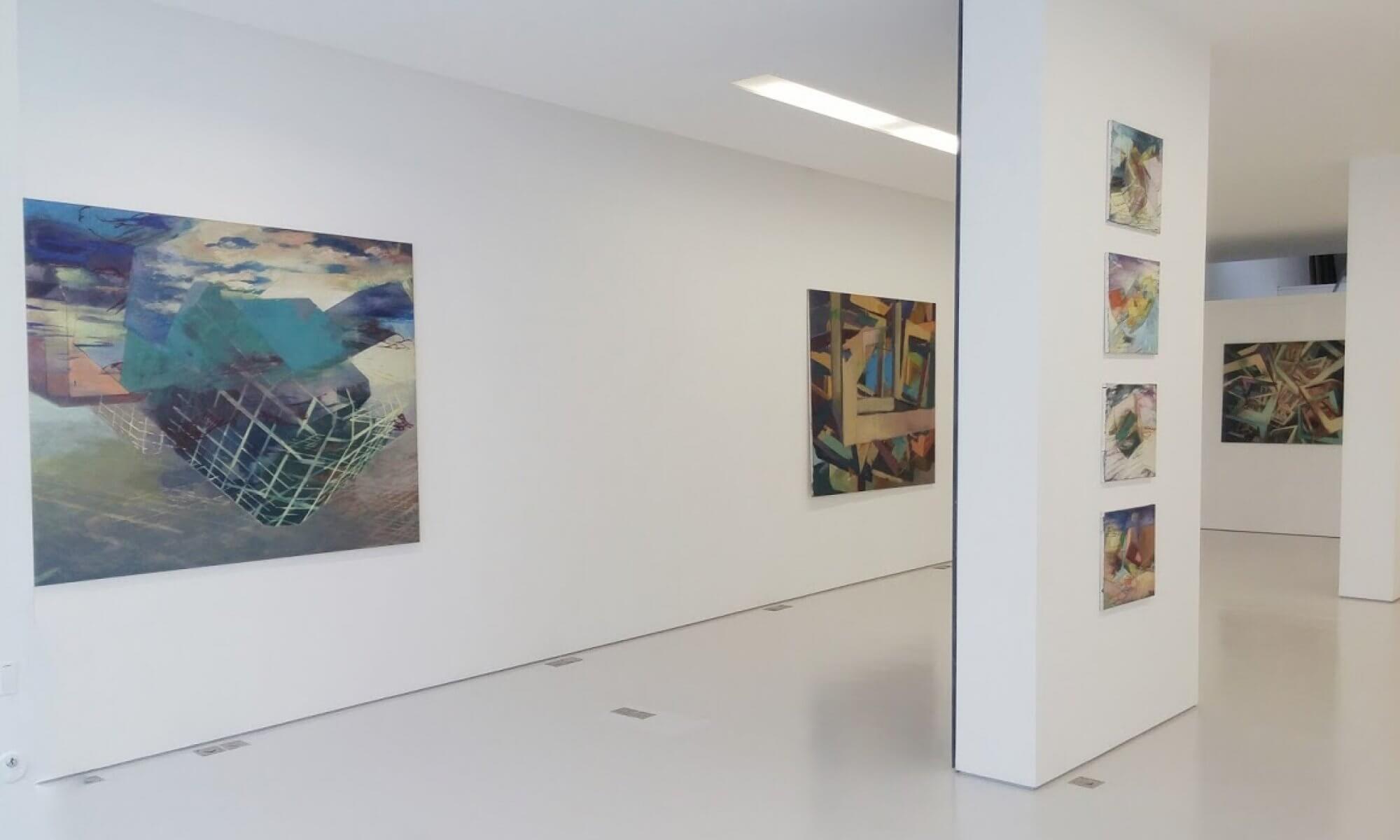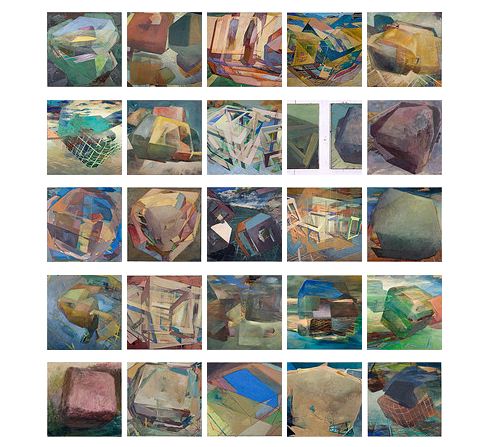I am working with only a few actual canvasses. The basic idea is to find in every run a new constellation, which modifies the previous one without altering the canvas or its main parameters. I isolate certain qualities of the painting techniques from works of art which I know and admire and apply them to my work as precisely as possible. Thus I try to find exciting and effective image constellations. When an image comes to the point of an effective formation I document it by taking a photograph. Sometimes I arrive at this formation immediately and very quickly, at other times it is only achieved after a tedious creative process. In between these documented constellations “happen” other ones I do not consider worth documenting. After documenting an effective formation I again send the image system “on the move” by modifying color and form. Based on the painting which already has emerged I work out its next effective formation. Every step of iteration recalls the previous, as a whole the final formation contains and remembers all the earlier constellations. The German Duden(4) of 1983 defines iteration in mathematics as “a step-by-step method of calculation to achieve an ever closer approximation of the exact result.” I use the term iteration to mean the built-up of image formations which progress into ever more complex units by a continuous feed-back with previous formations and by constantly re-absorbing and re-including all that was before. However, I also want to quote (again from the Duden) the second definition of the term iteration which is taken from psychology. It gives a hint at the less successfull sides of an iterative process: “Compulsive and continuous repetition of the same words, sentences and the same simple movements (esp. in certain psychological and neurological diseases)”. Based on the first definition I became more and more convinced of the following hypothesis about image production: The quality of a work of art is substantially improved when the painter “sticks to it”; if he or she revises it again and again, if he confronts the same artistic problem not only once, but over and over again. This happens both on the level of thought and on the level of craftsmanship. I am convinced that the acquired substance can be perceived in the final painting even if the layers of color underneath are no longer really visible. It is necessary to let one layer react to the previous layers as carefully and convincingly as possible. A simple adding-on of more color can by no means be a substitute for the kind of substantial materiality I want to procure!

Labor für komplexe Malerei.
